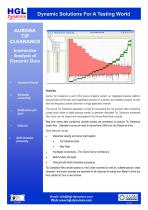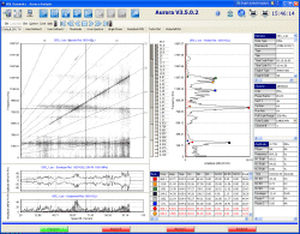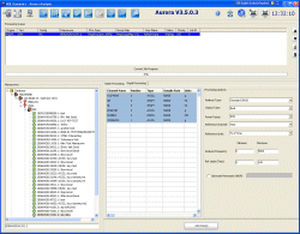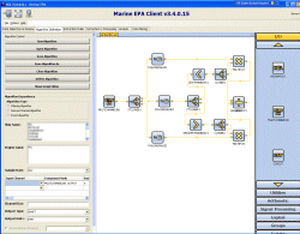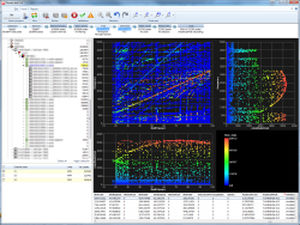
- Software - Simulation
- Software
- Server software
- HGL Dynamics
Server software Aurora Tip Clearanceanalysisfor aeronautics
Add to favorites
Compare this product
fo_shop_gate_exact_title
Characteristics
- Function
- server, analysis
- Applications
- for aeronautics
Description
Raw time series data sets (containing discrete pulses) are processed to produce Tip Clearance results files
Calibration Curves are used to convert from DNS (mV) into Clearance (mm)
Interactive viewing & cursor interrogation
Tip Clearance Data
Raw Data
Multi-function plot types
More Features:
Worldwide connectivity – Thin Client/Server Architecture
Orbit plot with Shaft Centre-Line processing
Tip clearance files provide access to ‘real’ probe channels as well as ‘collated-pseudo’ blade channels – the probe channels are searched for all instances of events from Blade X which are then collated to form a new channel
Aurora-TipClearance is part of the Aurora Analysis system, an integrated analysis platform that provides all the tools and capabilities required for summary and detailed analysis of both time and frequency domain data from a single application window.
The Aurora-TipClearance application is used for processing the raw dynamic data (containing pulses which relate to blade passing events) to generate calibrated tip clearance processed files which can be viewed and interrogated in the Aurora-RawViewer module.
The Aurora-TipClearance application allows the user to submit tip clearance processing requests which are performed by the Aurora-TipClearance Server. The Aurora-TipClearance Server identifies each pulse in the raw data and extracts the height of the pulse. The pulse height in mV is then converted to clearance through the use of a calibration curve (also produced by the system).
The processing by the Aurora-TipClearance Server includes several algorithms and techniques for rejecting false pulses
Catalogs
*Prices are pre-tax. They exclude delivery charges and customs duties and do not include additional charges for installation or activation options. Prices are indicative only and may vary by country, with changes to the cost of raw materials and exchange rates.


